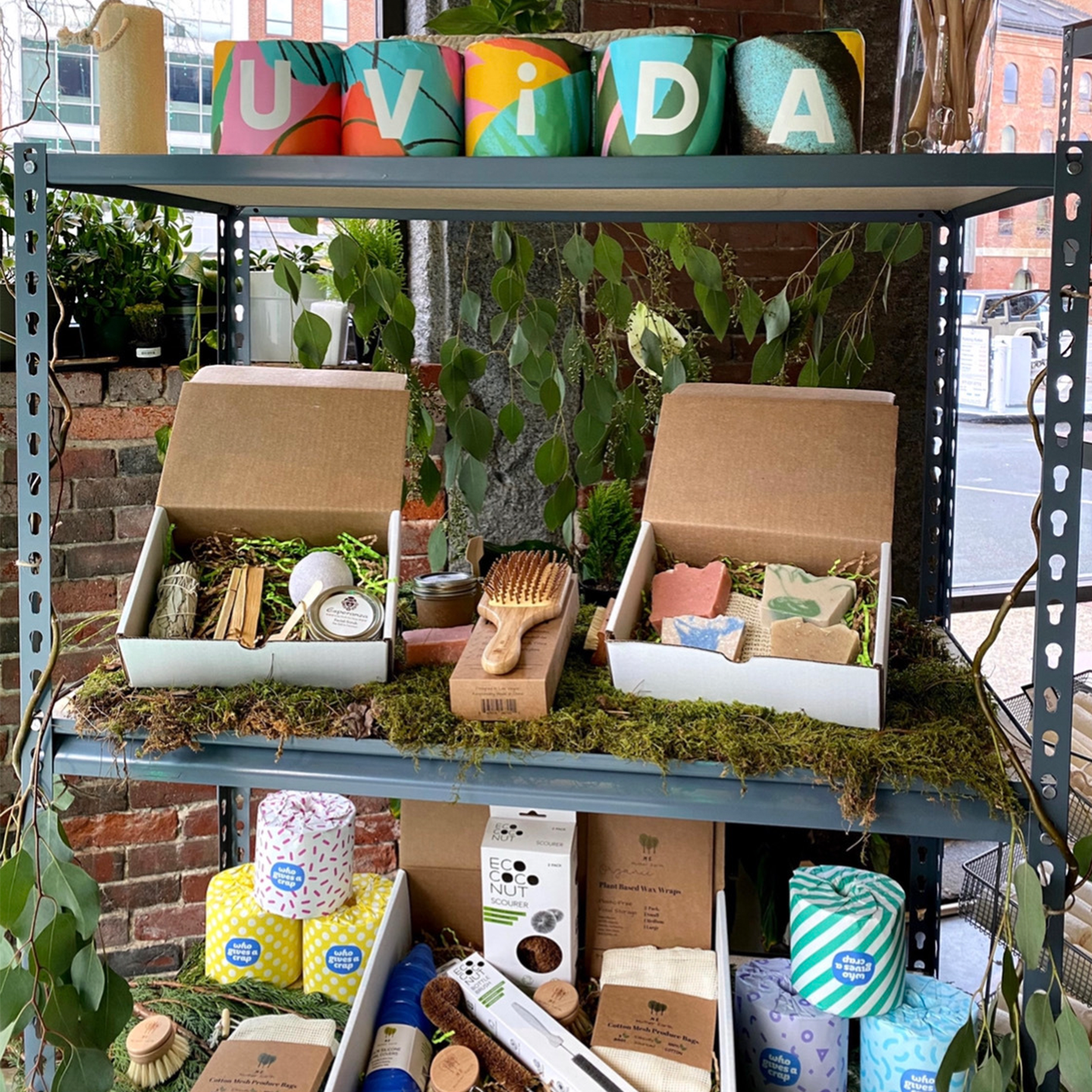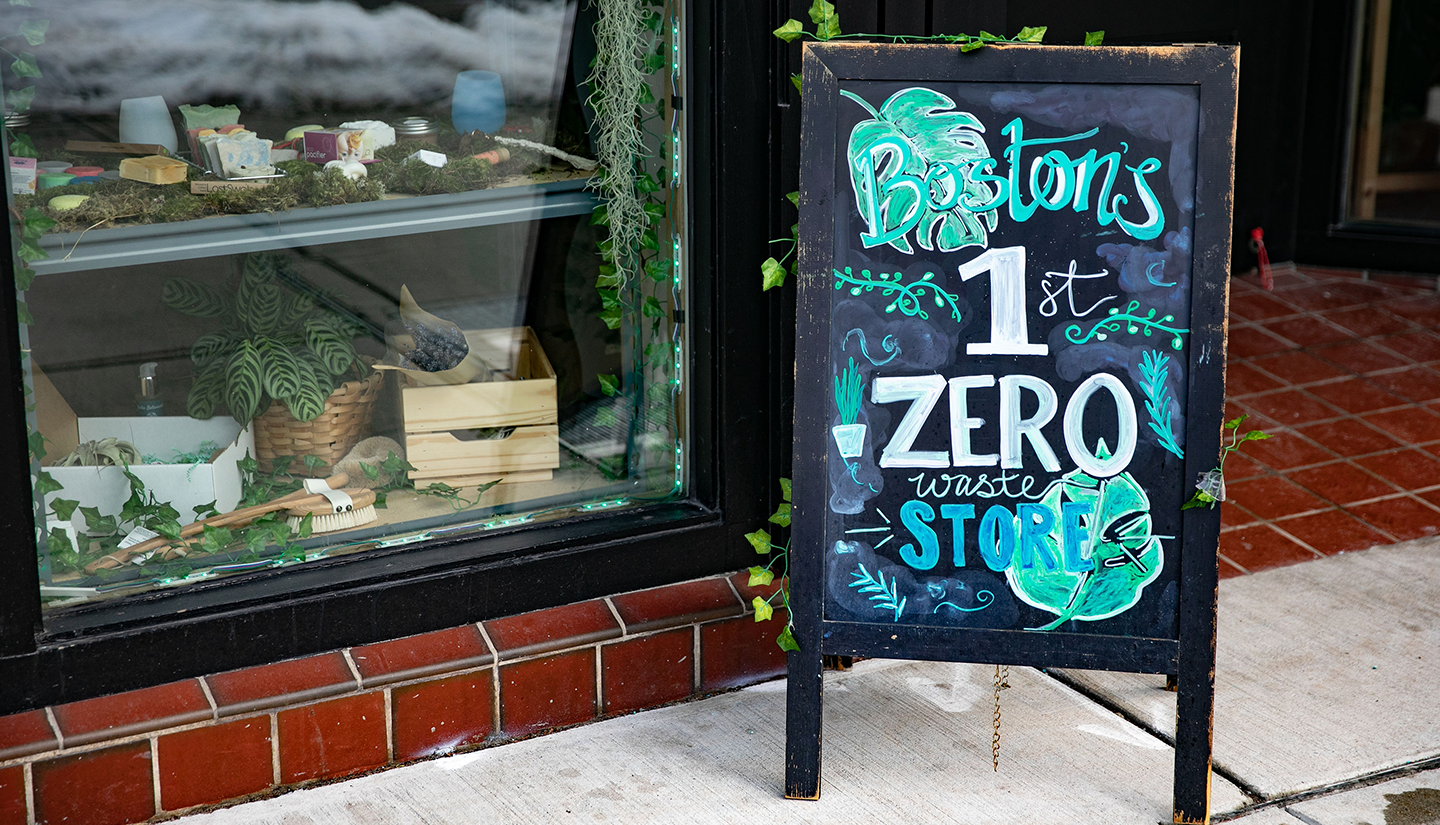Estimated Reading Time: 3 minutes
If you run a business with a brick-and-mortar shop, the term ‘window of opportunity’ couldn’t be more appropriate. Your window is the number one place to attract passers-by and showcase your brand…but not all business owners make the most of this space.
Your window isn’t just an opportunity to display your products — it’s also a space where you can build your brand and make a connection with potential customers. Visual merchandising, which includes the art of preparing window displays, is all about enticing viewers by telling a story, creating a mood and inviting them in to discover more.
We’ve pulled together some tricks of the trade to help you create more effective window displays and get more people into your shop. We also chatted with Maria Vasco, Founder and CEO of Uvida Shop, a zero-waste and eco-friendly shop, to learn what visual merchandising tricks work for her.
First, ask yourself a few questions.
To create successful window displays every time, there are a few simple but important things to keep in mind.
How “visual” are your products?
If your products are attractive to look at, you’ve got a good starting point. But if your merchandise is more practical than pretty, you can still create an impactful window display. You can draw attention to the features and benefits of your products, or create a scene around the experience your products provide.
Who do you need to appeal to?
Understanding your target customer will influence the types of props you use, whether you need to reflect trends and how quickly you need to grab the attention of passers-by. For example, office workers on their lunch break would probably give themselves less time to peruse your window than tourists.
What kind of street are you on?
When preparing a window display, it’s essential to think about people’s line of sight. Are you on a busy street where people will view your window from a few feet away? Or a narrow pavement where people walk by very close? Do you also want to be noticed by people driving past your shop front? The answers to these questions will help you understand how to best use your window space.
Ready to start designing? Follow these 6 visual merchandising guidelines:
- Create a scene.
- Glorify your products.
- Don’t be afraid of colour and contrast.
- Reflect the season.
- Surprise and delight
- Keep a photo log.
1. Create a scene.
There’s a saying in the marketing industry that people don’t buy products, they buy experiences. One way to tell a compelling visual story is to create a scene around your products that brings to life an experience, provides inspiration and creates desire. For example, if you sell food or pantry items, you could try placing them on a picnic blanket with a basket and champagne glasses. Then, add greenery or faux flowers to create the feeling of being in nature. You might be selling jars of pickles, but by using props to create a scene around them, you can inspire customers to come in and create an experience of their own with products from your shop.
Maria reflects Uvida Shop’s eco-friendly mission in her window display. “We currently have real moss on our window display shelves for decorating purposes, and it’s really helpful in getting the message out to our customers that we are a natural-products store.”

2. Glorify your products
Simply presenting a window stuffed full of products is more likely to feel invading than inviting. Instead of overwhelming potential customers with a window packed full of products, identify a focal point — likely to be your lead product — and arrange things in a way that guides the eye towards it. Choose one main product as your key focus and ‘glorify’ it by giving it the most prominent window position. Place complementary products or props around it in a ‘pyramid’ format to help direct the eye towards the main focal point.

VistaPrint Tip
If you want to include price tags or sales information in your display, try to keep it subtle — you don’t want to cheapen the look of your display with overly promotional tactics, or discourage people from coming in if your shop seems too expensive.
3. Don’t be afraid of colour and contrast.
If your products come in vibrant colours, make use of that to draw attention. If not, consider adding a backdrop to create contrast and help them stand out. You can also add colour and visual interest with temporary window paint or seasonal florals. When you’re choosing which colours to display in your window, keep it to a few key hues — the palette should be complementary and reflect your brand. “We ensure that our window displays feel on-brand by staying within our brand colours”, Maria says.
And when thinking about contrast, consider the type of business you are and how you can use lighting. Do you sell artisanal handmade soaps and candles? You probably don’t want fluorescent lighting in your window, while that might be a fine choice for a pharmacy.
4. Reflect the season.
Tying in the seasons is a simple way to feel relevant and tuned in to your community. Showcasing gift ideas is one way of doing this and can also help drive sales. But if your products don’t make for great gifts, simply adding some seasonal elements to your display will help create emotional appeal and show goodwill.
VistaPrint Tip
Keep your shop front feeling fresh with a seasonal poster or banner — it’s a low-cost, low-effort way to embrace the current moment.
5. Surprise and delight.
Using an unusual prop or light humour in your window can be a great way to brighten people’s day. After all, who doesn’t love a pavement sign with a funny cartoon? Plus, it promises that entering into your shop will result in a fun, light-hearted experience.
Another way to keep customers on their toes is by regularly updating your display, even if it’s just a new poster promoting a sale or event. “At Uvida, we update our window displays once a month at the beginning of the month”, Maria says. “We do this because we want to show potential customers what new products have entered our store and we also like to connect and make ourselves relevant with any holidays coming up in the month.”

6. Keep a photo log.
Whenever you update your display, snap a photo — and keep those photos in an easy-to-access folder on your computer or phone. If you had a particularly successful shop front last Valentine’s Day, you might want to recreate it next year. You can also share those snaps on your social channels to let customers know there’s something new to check out.
It’s also a good idea to keep note of any comments people made about your display…don’t be afraid to ask customers what they think when they come into your shop! Maria’s biggest advice to business owners struggling with display ideas is to ask for feedback. “We get feedback from customers about our window displays and often, it is very helpful advice on something that our team members did not think of or realise. Past customers might notice things that owners wouldn’t.”